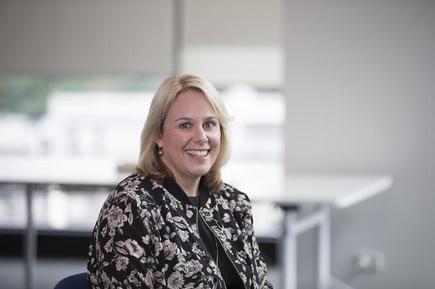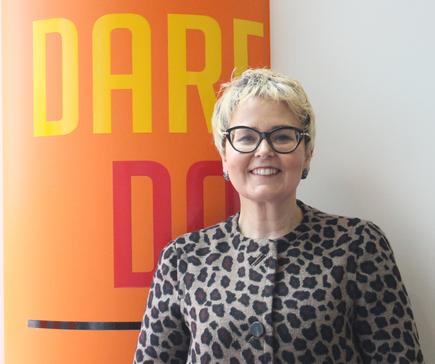
Nurturing a career in a fast-pace sector
The New Zealand respondents are generally happy in their current role, with nearly a third seeing themselves continuing in the role for the next three to five years.
The next career aspiration is to be a CEO, and an equal number want to move to a customer facing digital strategy role, such as a chief digital officer or chief customer officer, or an entrepreneur, or leading a startup.
They are also proactively managing their career, with 71 per cent saying they primarily do this by conducting their own research on market trends and opportunities.

More than half regularly tap personal and industry networks. A quarter of the respondents say they participate in their organisation’s executive development plan, enrol in a course on becoming a director, or are getting an MBA.
An interesting insight into this year’s report is the rise of the chief digital officer, and how some CIOs are stepping into this new C-suite post.
As one respondent notes, the CIO and CDO roles are becoming increasingly connected, and in some cases the CDO role is replacing the CIO role.
 Credit: Watercare
Credit: WatercareAnticipate the business need. What are the right tools and technologies to allow this? This is not done in isolation, it requires a business connection
Rebecca Chenery says the chief digital officer role is still new to New Zealand organisations, but she expects to see more such appointments in the months ahead.
“To some extent, the creation of a digital role is about evolving the IT function from ‘old school IT’ to future-focused thinking,” she says.
This, she explains, is around, “How we adopt new technologies, how we innovate, and how we use technology as an enabler in the business.
“What is the outcome we are delivering, what is the problem we are trying to solve, what is technology doing to solve it?”
 Credit: University of Auckland
Credit: University of AucklandWhat are the short-term impacts of making these changes, and of course, what are the long-term? How do you realistically plan for the unintended consequences that your decisions will bring?
As CDO, Chenery is in charge of the technology side of the organisation - across all legacy IT and new digital functions.
“Technology needs to work, it just needs to be available for the business, it needs to be fit for purpose,” she expounds, on an imperative for digital and technology leaders.
“You don’t have any license to operate if you don’t get that stuff right.”
“That hygiene factor is about optimising efficiency, availability, and making sure the internal user experience is good,” she says.
“How do we run the sleekest operations? Again, anticipate what is the business need,” she points out.
“Do we want to drive mobility for the workforce? If so, what are the right tools and technologies to allow this? This is not done in isolation, it requires a business connection.”
Grant Taylor, for his part, has progressed through the ranks of IT leadership, from IT manager, to CIO, chief operating officer, and is now chief digital officer at The Gough Group.

The chief digital officer role is one of change
Gough Group is a major equipment supplier to the construction, infrastructure, mining, forestry, transport, and power system industries. Taylor, however, did not step into the inaugural CDO role directly as CIO.
While he has been a CIO in both the government and private sectors, Taylor was chief operating officer at retail and design firm Citta for nearly three-and-a-half years, before joining the Gough Group.
He says he is particularly interested in roles that are customer facing, being involved in changing the business, and tackling disruption.
“For me, the chief digital officer role is one of change,” says Taylor. “Throughout my career, I have been somebody who wants to change and improve the business, so being CDO is a natural fit for me.”
Taylor adds that whatever the decision of the CIO - whether to remain in the role or explore other leadership options - it is important to know their core competencies and capabilities.
“Whether this is being really good at infrastructure, security, and customer service, it is critical to know what you are good at, and what is good in your career,” says Taylor.
‘I’ for impact
Wendy Kerr, director at the Centre for Innovation and Entrepreneurship at the University of Auckland Business School, proffers another way CIOs can look at their evolving environment and their respective roles.
That is, to take the perspective of a “chief impact officer”.
“Change is everywhere,” explains Kerr. “New technology and tools are abundant and all vying for our attention and use.”
“As a consequence, the CIO role must be mindful of impact.”
“What are the short-term impacts of making these changes, and of course, what are the long-term? How do you realistically plan for the unintended consequences that your decisions will bring?”
“So what must a chief impact officer do?
“We are naturally resistant to change,” she states, “so involving teams in creating the possible scenarios that could play out is a way to ensure buy-in and also some divergent views, which may bring new insight.”
It is a considered approach CIOs can take as they participate, and most importantly, lead, in one of the most profound transitions all organisations are undertaking in the digital era.

Get the latest on digital transformation: Sign up for CIO newsletters for regular updates on CIO news, career tips, views and events. Follow CIO New Zealand on Twitter:@cio_nz
Send news tips and comments to divina_paredes@idg.co.nz @divinap
Join the CIO New Zealand group on LinkedIn. The group is open to CIOs, IT Directors, COOs, CTOs and senior IT managers.
